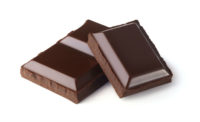Chocolate trends: Popular flavors, growing claims and reconnecting with adults
FONA's Trends Team releases its chocolate confectionery report based on data gathered between Jan. 2012 and Dec. 2015.

The reports are in. FONA's Trend Team has released a detailed overview on chocolate confectionery trends based on data accumulated between Jan. 2012 and Dec. 2015.
With 75 percent of women and 68 percent of men reporting that they indulge in chocolate, those trends are ones to keep an eye on.
Flavors
Hazelnut is the flavor to watch, experiencing nearly a 50 percent increase in launches since 2012 (411 to 606). That growth is poised to continue. By the second week of February, the number of hazelnut product launches was already at 110.
Coffee flavor follows with the second highest percentage of growth at 40 percent, while coconut and caramel fight for third at around 30 percent growth over the same time period.
Top 5 Global Flavors
1. Unflavored/Plain
2. Hazelnut
3. Caramel
4. Almond
5. Orange
Top 5 North American Flavors
1. Unflavored/Plain
2. Caramel
3. Almond
4. Peanut Butter
5. Hazelnut
Claims
Ethical claims have seen tremendous growth in the chocolate category, with Low/No/Reduced Allergen, Gluten-Free and Organic claims posting large gains since 2012.
Top 5 Global Claims
1. Seasonal (+21 percent)
2. Ethical-human (+300 percent)
3. Ethical – Environmentally Friendly Product (+846 percent)
4. Low/No/Reduced Allergen (+195 percent)
5. Kosher (+36 percent)
Reconnecting Adults with Chocolate
According to Mintel data, older consumers have a lower engagement with chocolate. The lack of interest reflects their desire to eat healthy. To regain adult customers, companies have turned to tactics such as using alcohol flavors, organic ingredients, and premium positioning.
Recent launches have featured Limoncello and dark chocolate, chocolates filled with the sweet herbal Liqueur Beirao, and dark chocolate and truffles flavored with Merlot, Pink Champagne, and Pinot Noir.
And although the organic claim has dropped in the United States between 2012 and 2015, it's on the rise globally, growing from 351 launches to 705. Seven percent of chocolate confectionery launches currently carry the organic claim.
Global chocolate premium claims have also risen by 50 percent since 2013.
Looking for a reprint of this article?
From high-res PDFs to custom plaques, order your copy today!





